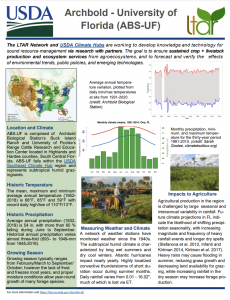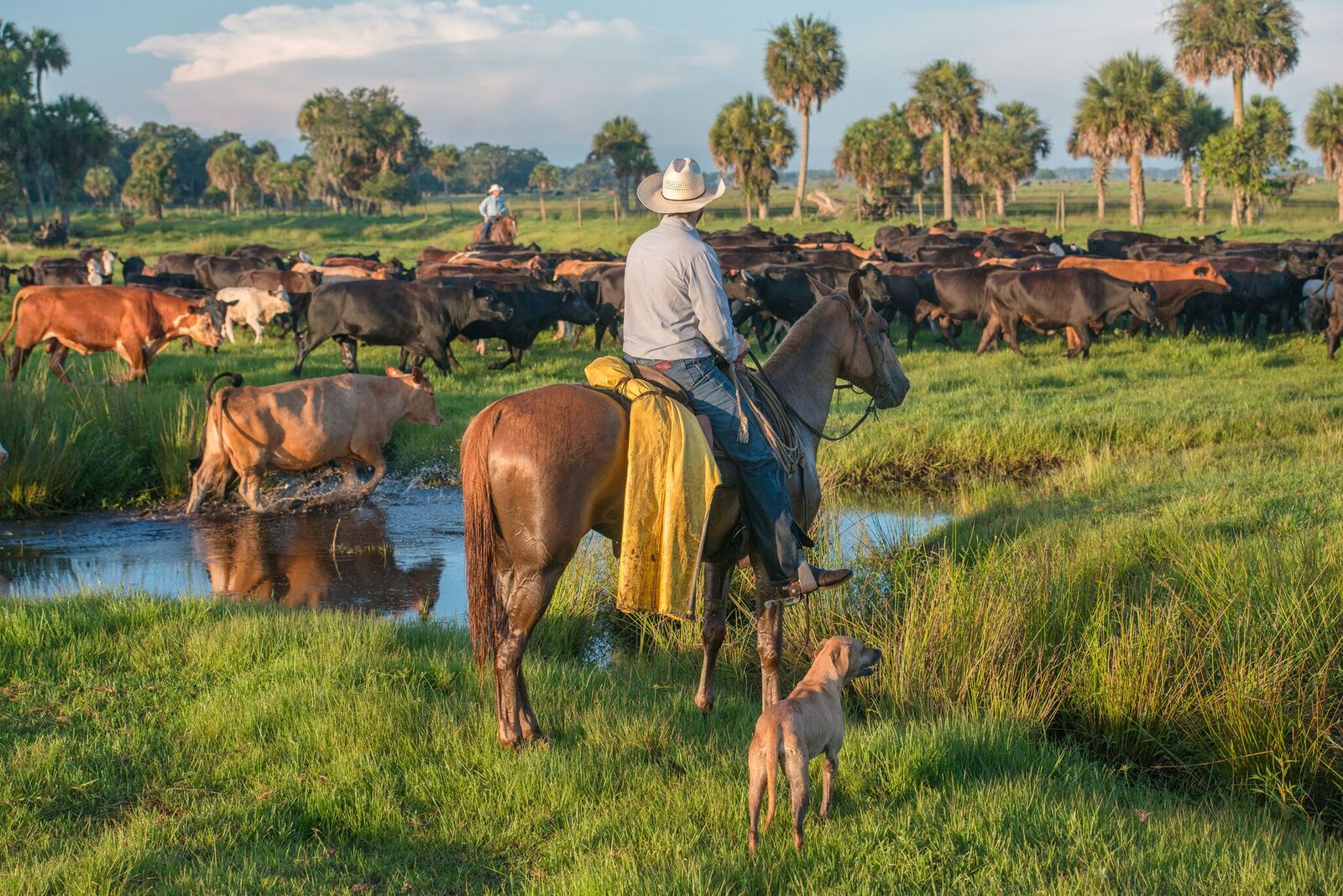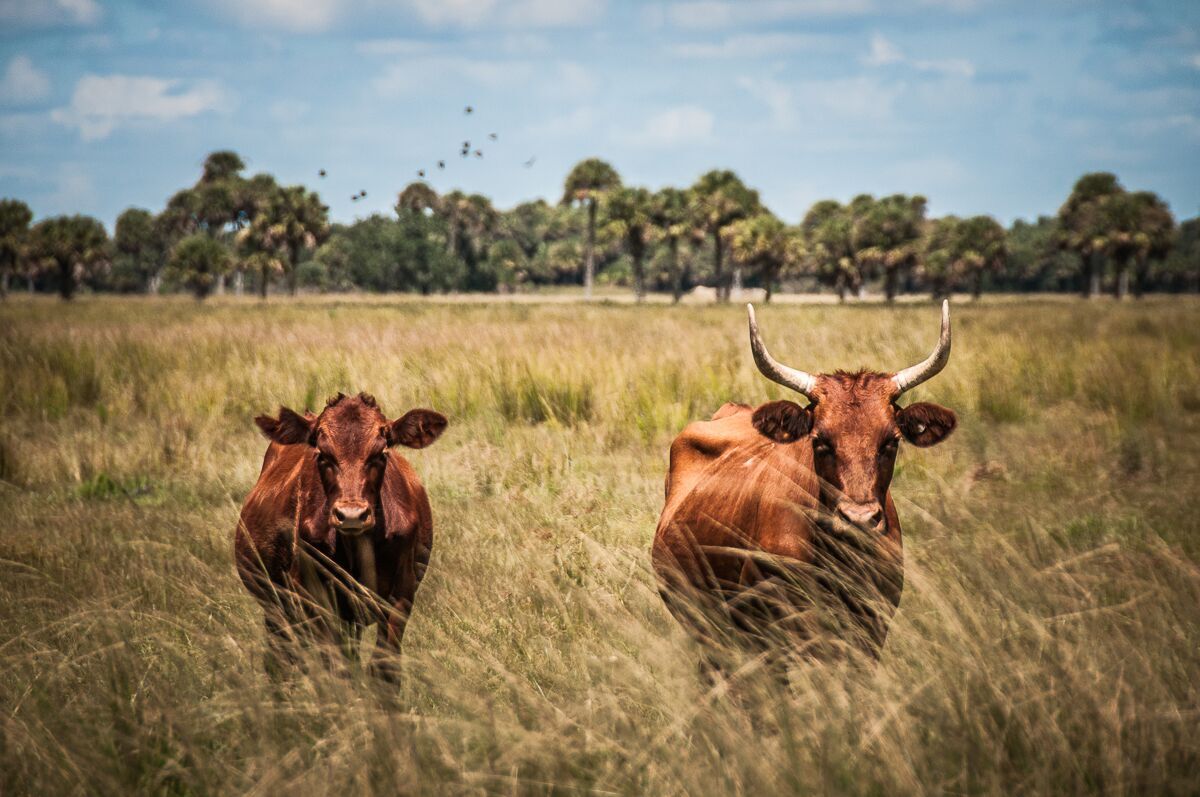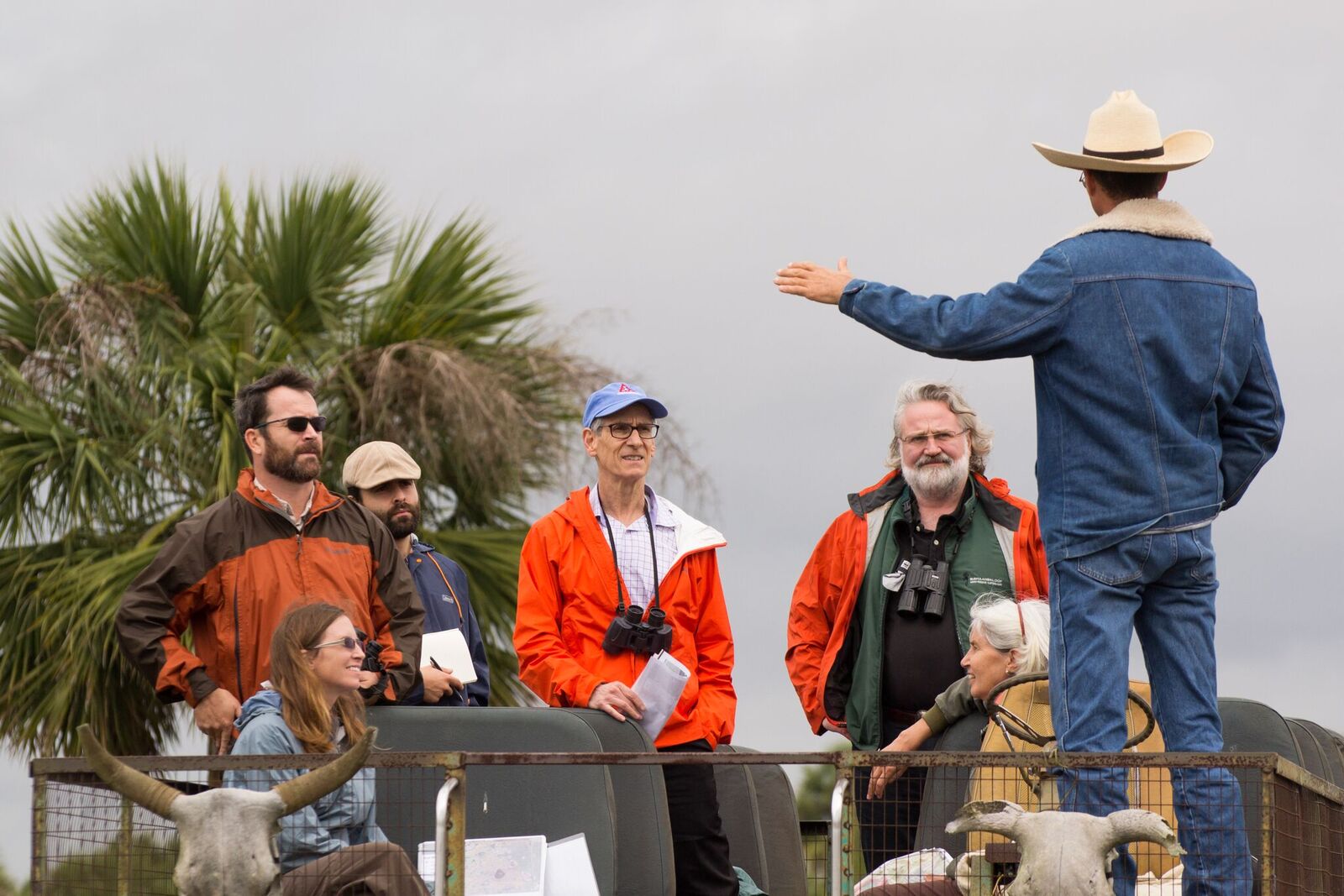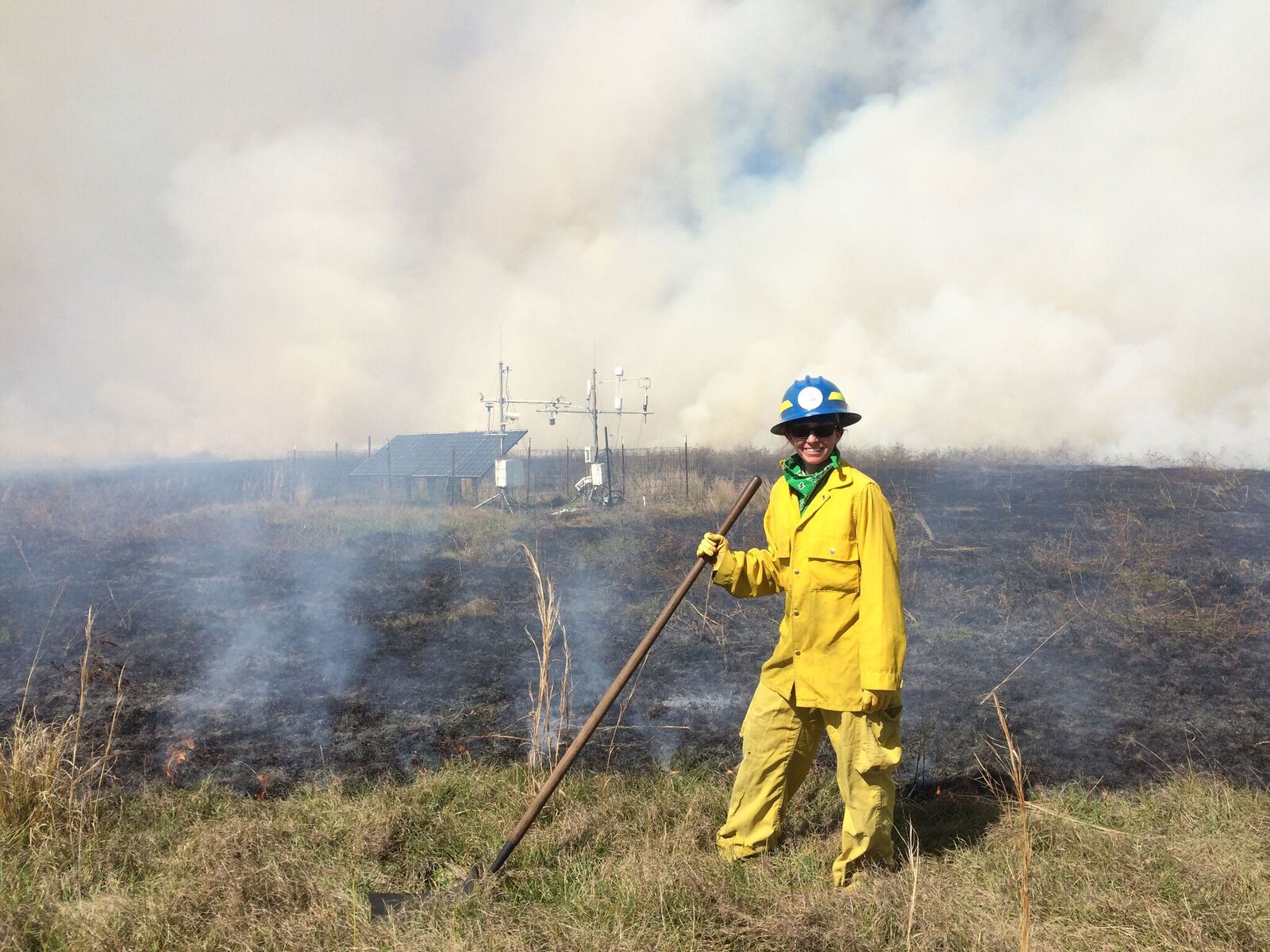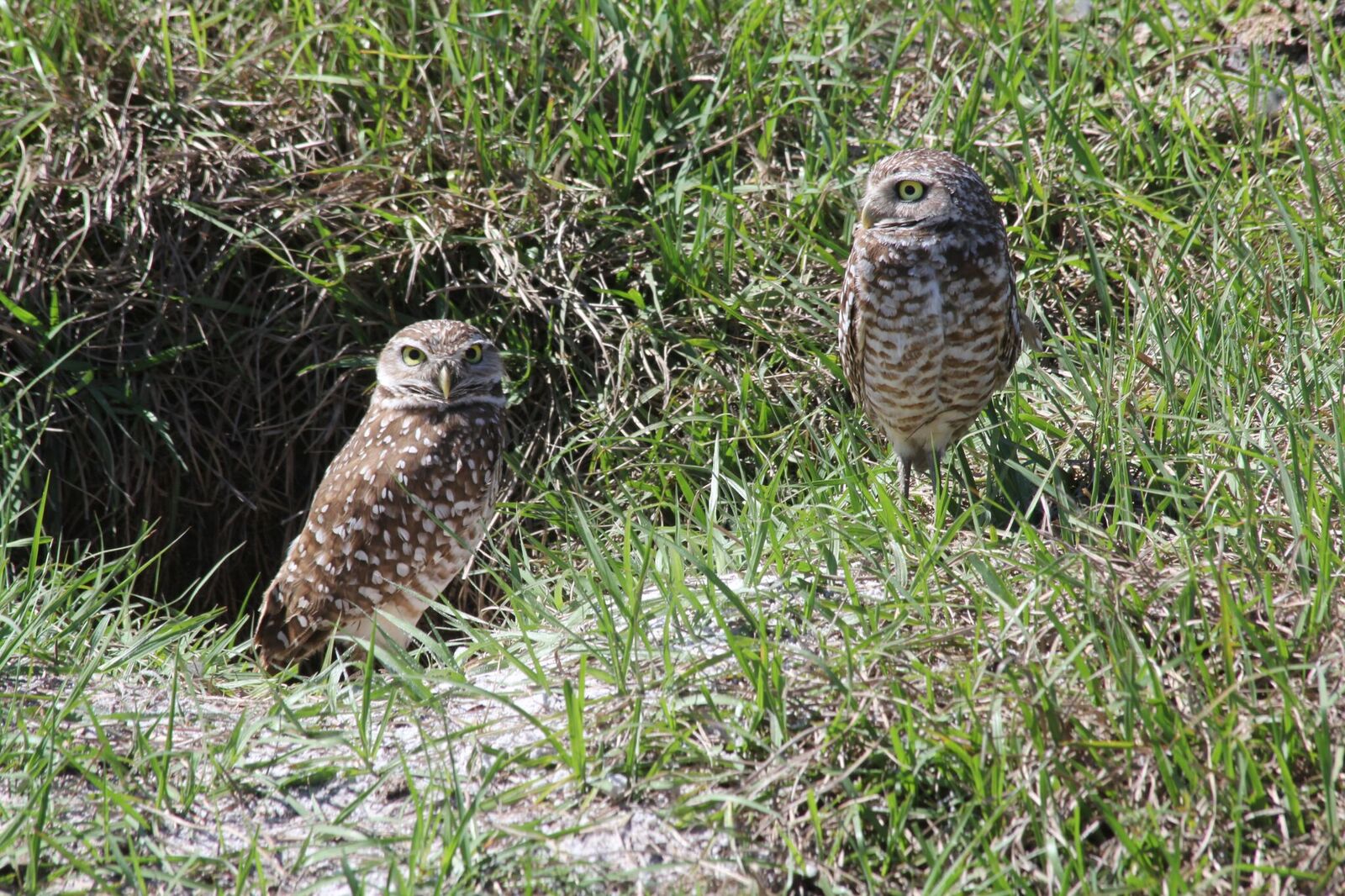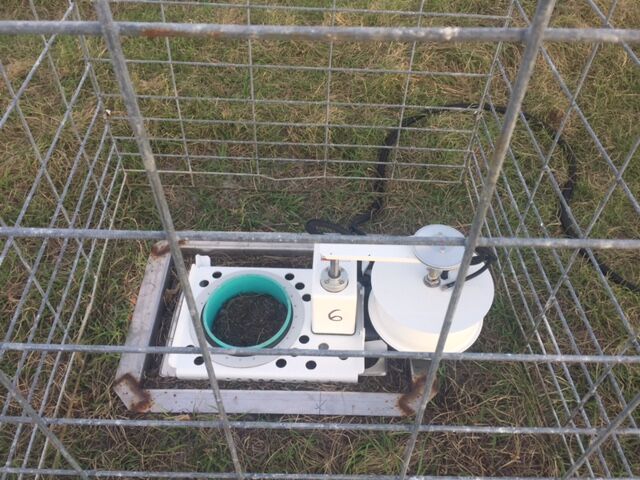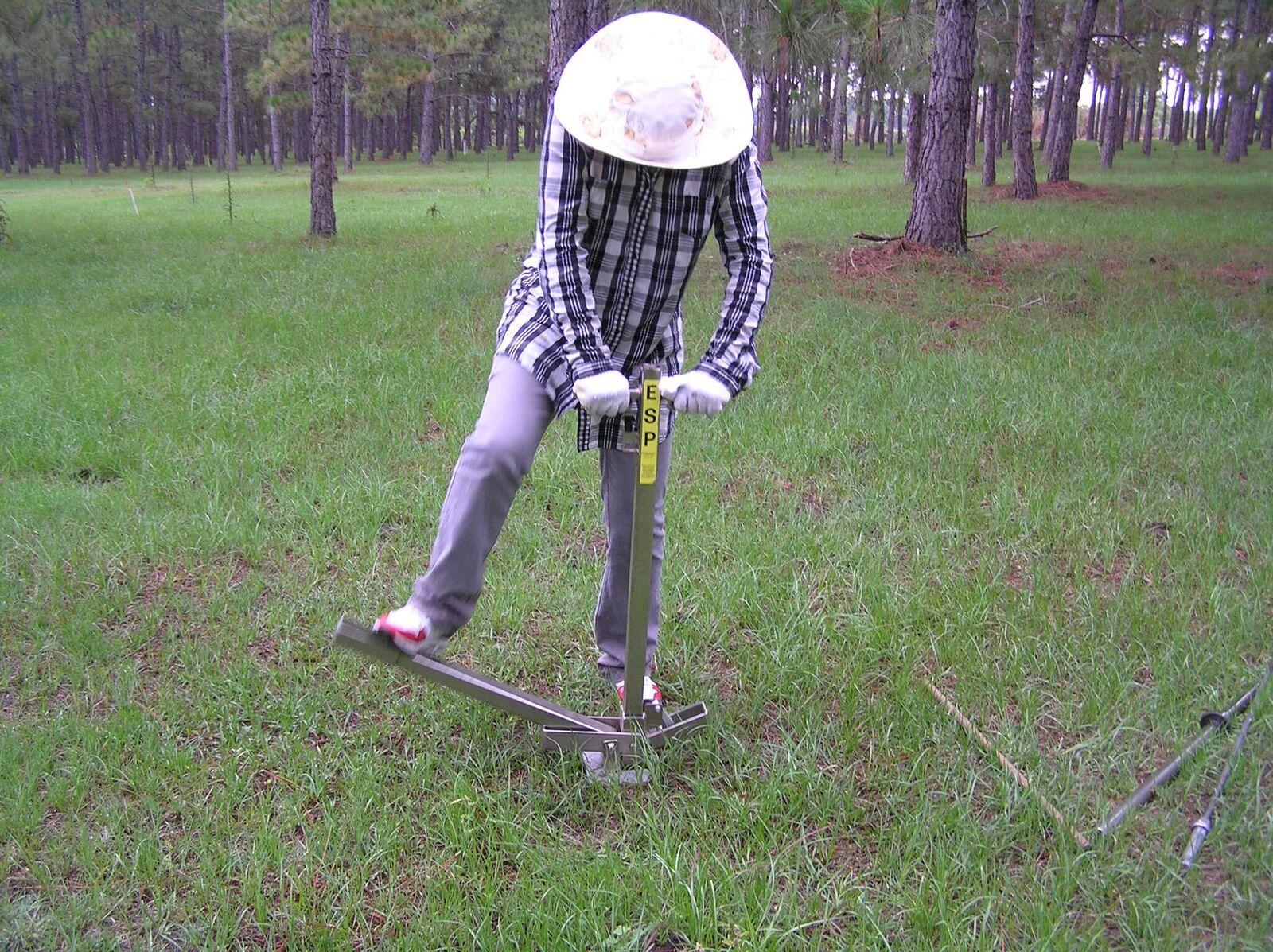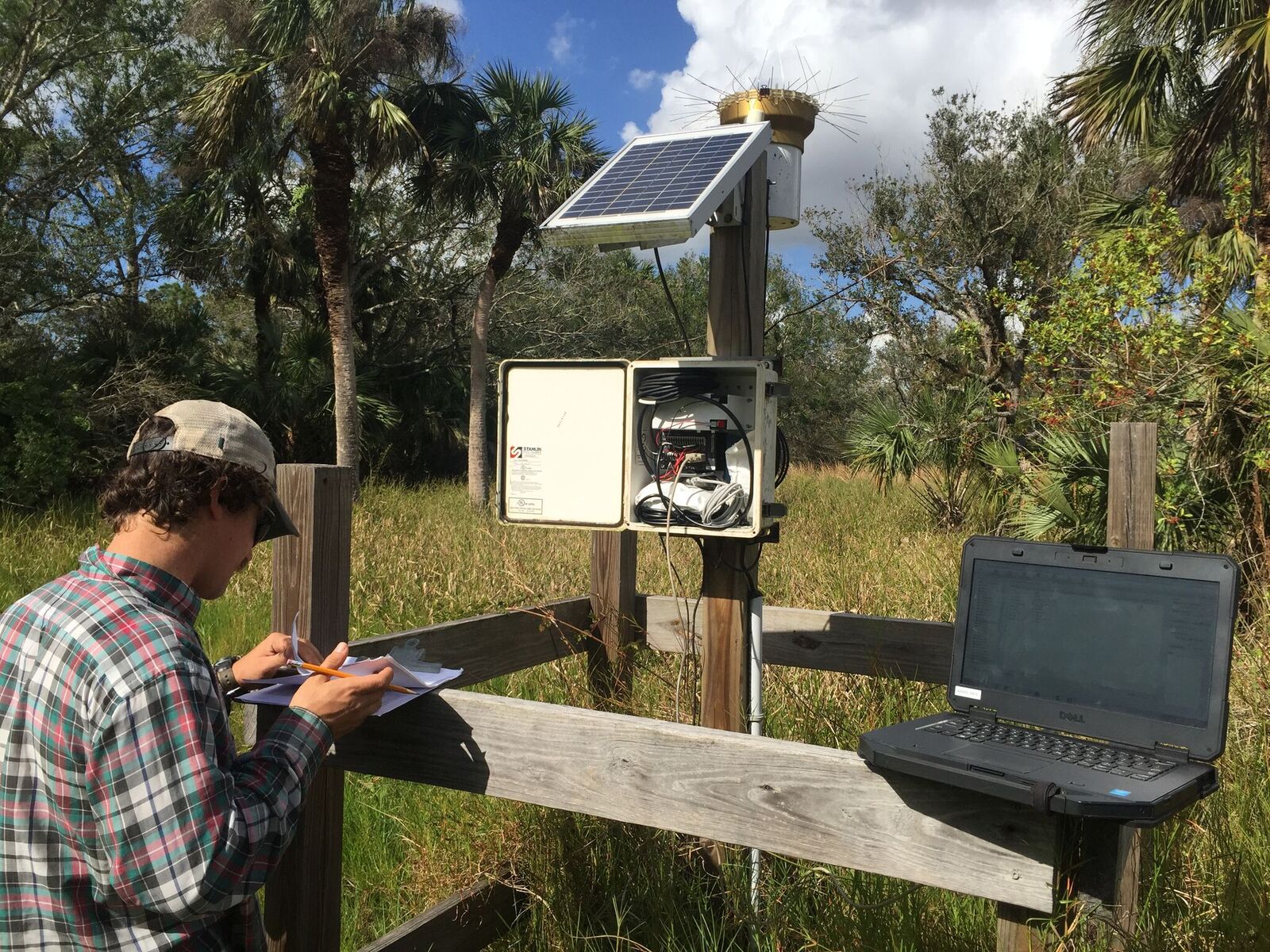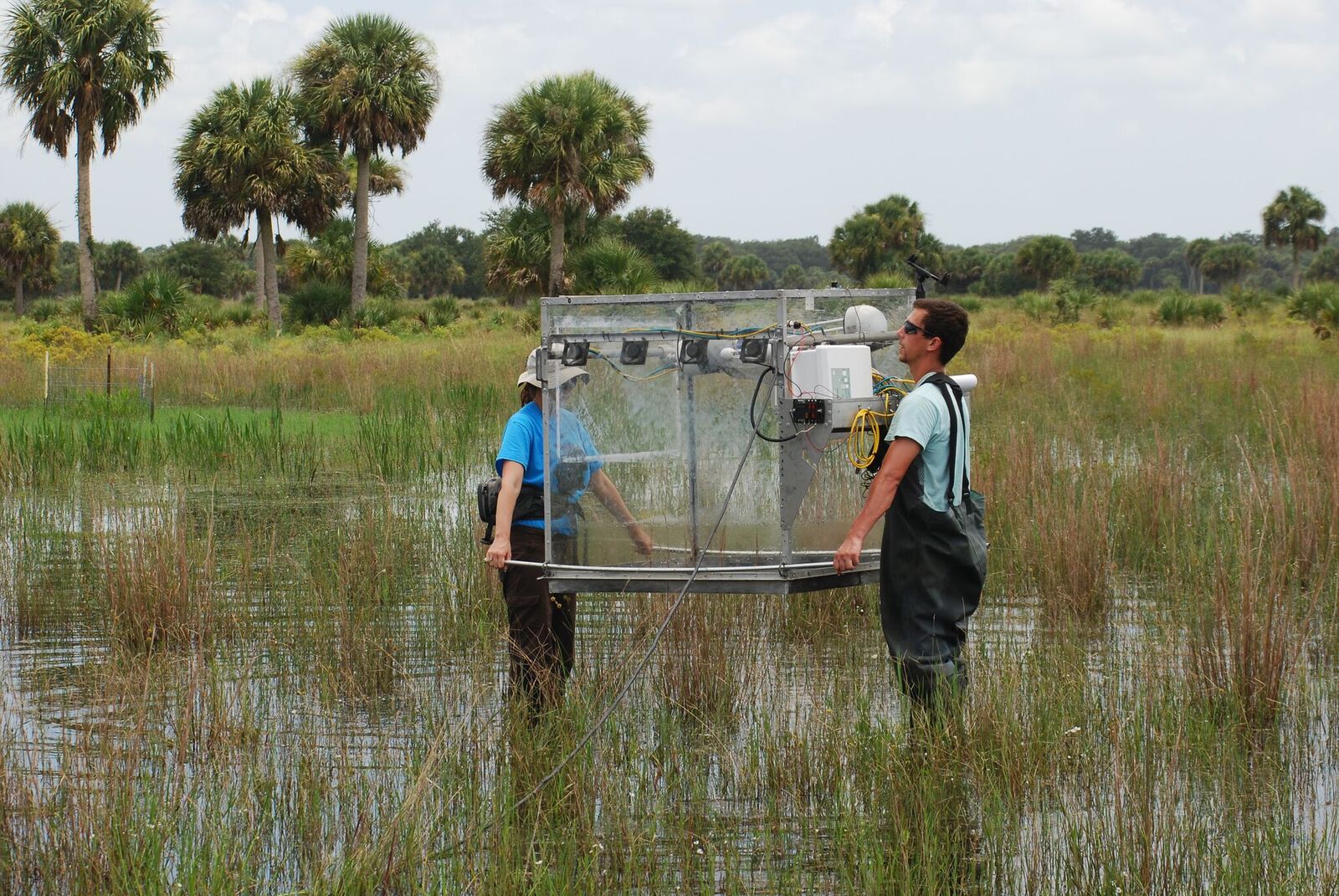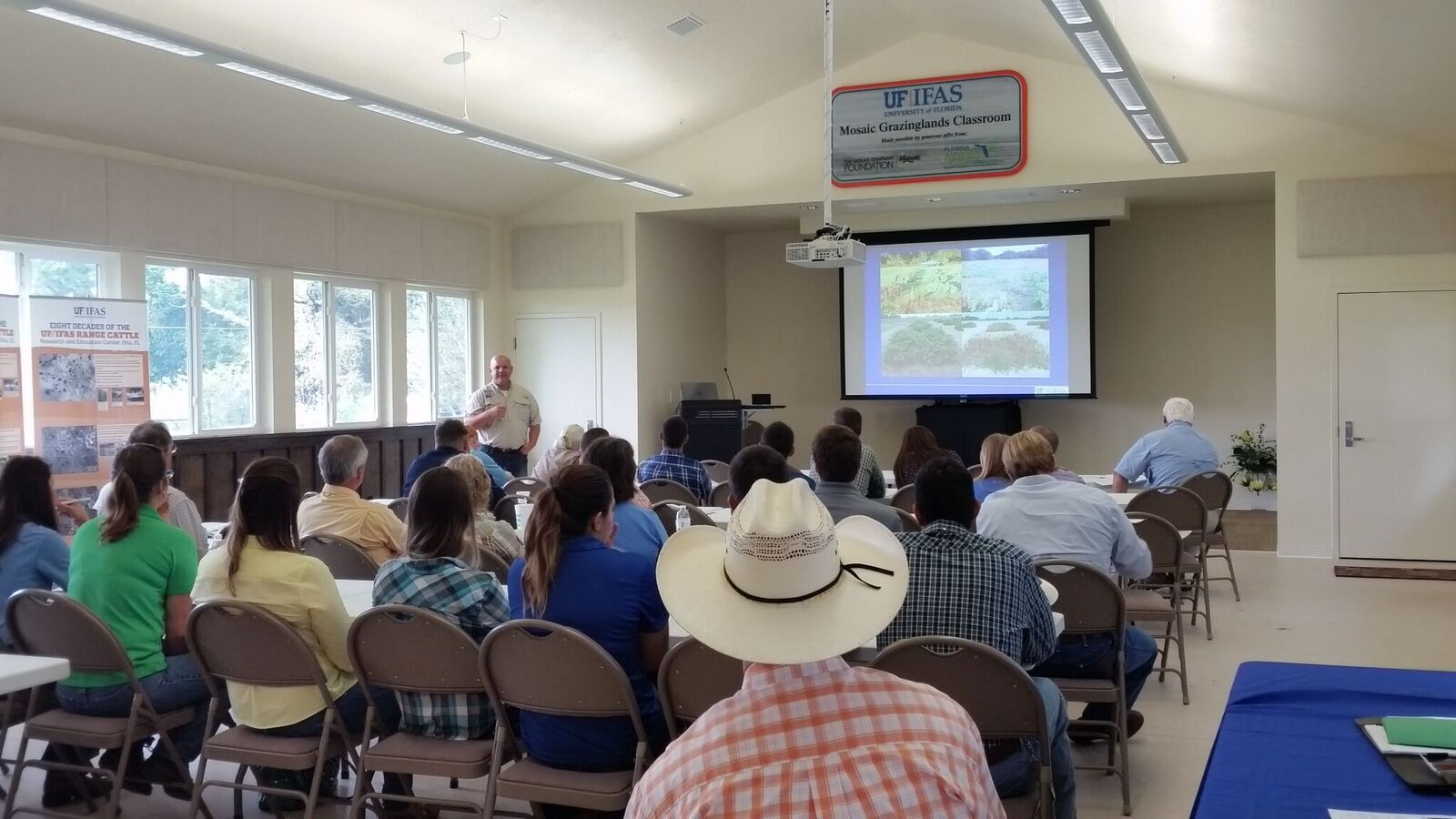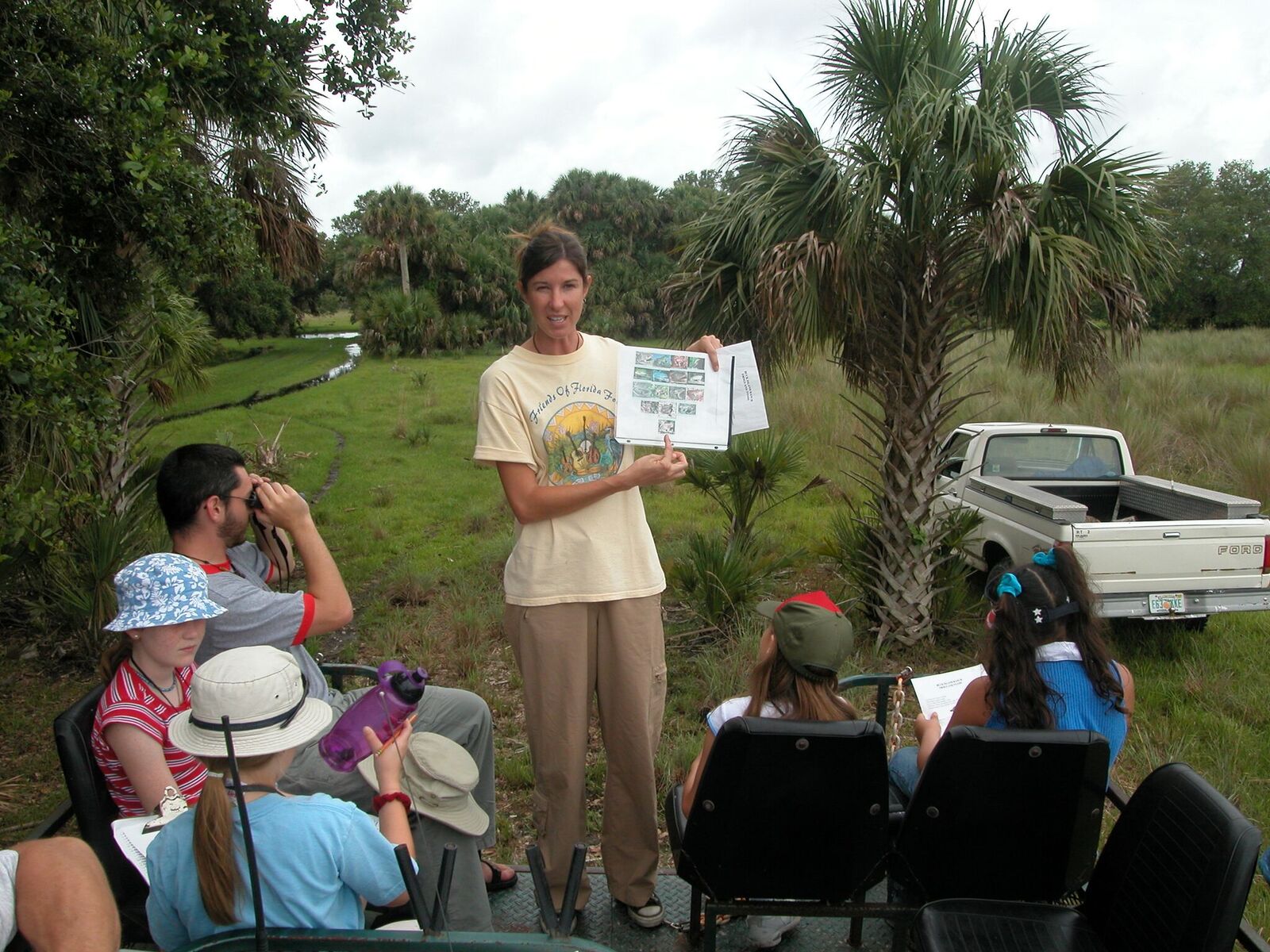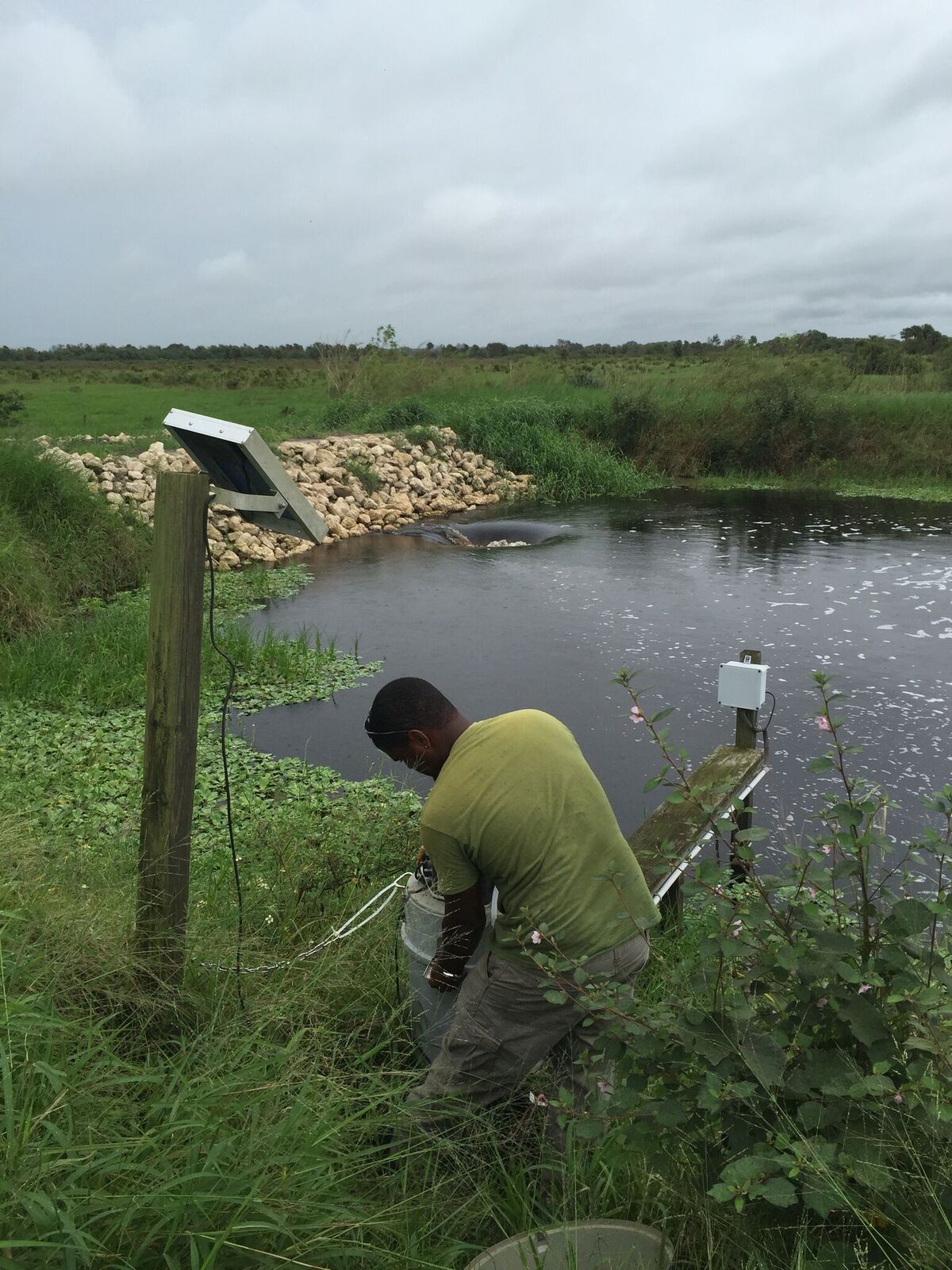ABS-UF
Archbold-University of Florida, South Central FloridaWho Operates and Manages this LTAR Site?
Archbold manages three research sites in the ABS-UF LTAR totaling nearly 90 km2, namely Archbold Biological Station (Station), Buck Island Ranch (BIR), and the Archbold Reserve (Reserve). Buck Island Ranch is a 3,000-head commercial cattle ranch owned and operated by Archbold. The fourth site in the ABS-UF LTAR is the University of Florida Range Cattle Research and Education Center (UF RCREC), totaling 12 km2 and managed by the University of Florida.
Description
The primary ecosystem focus of the ABS-UF LTAR is subtropical humid grasslands, providing a south-east anchor for continental-scale cross-site research on grazing lands in the LTAR network ranging from arid western rangelands of the Jornada, New Mexico to the planted pastures of the eastern USA. Archbold lies in the Headwaters of the Everglades—a pivotal watershed for understanding the role of agriculture in relation to water management, biodiversity, and a changing climate. The four sites Station, BIR, and Reserve and UF RCREC provide a hydrological gradient from high xeric sandy ridges across seepage slopes and the surrounding ranchlands and rivers. The sites also provide a gradient of management intensity from highly modified pastures, through semi-native grasslands, to native range. Encompassing three working ranches totaling 4,800 cattle, the four sites serve as natural laboratories to understand the relationships among agricultural production, other ecosystem services, biodiversity, and climate change. Nearly 80% of Florida’s cow-calf production is found within 150 miles of these LTAR sites, and they also provide access to surrounding lands dedicated to citrus and row crops. Archbold and UF work closely with ranchers, conservationists, and policy makers to disseminate research-based information to rural and urban stakeholders. Partners include federal, state and local government agencies, trade groups (e.g. Florida Cattlemen’s Association) conservation organizations (e.g. The Nature Conservancy) and a wide array of collaborating academic institutions.
Geography
The ABS-UF sites are strategically located in an ecologically-sensitive region, including the headwaters of the Everglades. Geographic extent (bounding box) ranges from UF RCREC in the northwest (27.411043N, -81.957609E) to BIR in the southeast (27.121199N, -81.168341E). Land use includes sown and semi-native pastures, native rangelands, and the globally-threatened Florida scrub ecosystem of the Lake Wales Ridge.
Climate
Climate is characterized by subtropical conditions with an average annual precipitation of ~ 1,650 mm (> 65% occurring from June to October) and average minimum and maximum daily temperatures ranging from 16.9 to 28.2o C.
Download ABS-UF Climate Syntheses PDF
Instrumentation
Laboratories
Station: Research programs include laboratories for Avian Ecology, Plant Ecology, Entomology, Herpetology/Restoration Ecology, and two multi-user labs (for resident scientists and visitors) with general-purpose 60 m2 Chemistry lab and 44 m2 Multi-User Lab. The latter has a fume hood, de-i water, Olympus BX60 compound microscope, Olympus SZX12 stereoscopic microscope, multiple workstations, oven/muffle furnace, analytical and top-loading balances, germinator, growth chamber, -80 freezer, and other smaller equipment.
BIR: Research utilizes a Wet Lab and Ecosystem Lab with drying ovens, Spex CertiPrep 8000-D Mixer Mill, Tekmar A-10 analytical mill, Wily Mill, Thermolyne Muffle Furnace, µ Quant Spectrophotometer, Autoclave EZ9 Steam Sterilizer, two centrifuges, Comaerc Z Heating Plate, IsoTemp Oven, Titer Plate Shaker, and Radioisotope Gas Chromatograph, in addition to microscopes and balances.
UF RCREC: Laboratories are fully equipped including a Flash EA 1112 CN combustion analyzer, Seal AQ2 discrete analyzer, Perkin Elmer Clarus 480 gas chromatograph, Ankom 2000 Fiber Analyzer and Daisy II 200-220 Incubator for forage quality analysis, analytical balances and microbalance, fume hood space, digestion block and hot plates for acid digestion, and oven and muffle furnace.
There is extensive field instrumentation already deployed across the four sites including:
- A total of 13 weather stations over all 4 ABS-UF sites: 2 at Station, 9 at BIR, 2 at UF RCREC
- 53 active groundwater wells over all 4 ABS-UF sites: 23 active wells, 9 inactive wells, and 5 Southwest Florida Water Management ROMP wells at Station and Reserve, 29 active groundwater wells and 28 inactive groundwater wells at BIR, 1 at UF RCREC.
- 11 surface water wells on BIR monitoring ditch water levels. Two of these wells are used for flow calculations at the nutrient load monitoring site. The rest of these are for ditch water level monitoring.
- Three automated water samplers on BIR that collect water samples for nitrogen and phosphorus nutrient load analysis when sites are flowing. One automated water sampler is located at the outfall of a ~1000 acre watershed that is modeled with MIKE-SHE/MIKE11. Two automated water samplers are located on a nutrient removal project where water is pumped into a 188 acre pasture; water samplers are located at the pump-in location and one located at the pump-out location.
- 6 Eddy Covariance (flux) towers (Campbell Scientific) across 4 ABS-UF sites, along with installed phenocams: 5 at BIR, 1 at RCREC.
- 7 total phenocams (one on each eddy flux tower and one on the 1000 acre watershed used for monitoring water quality and quantity
- Lake Annie Buoy: The Buoy is located at Archbold in the middle of Lake Annie. It includes sensors for surface water dissolved oxygen, pH and conductivity, water temperature sensors at meter intervals to the 19 m depth, surface and subsurface Photosynthetically Active Radiation (PAR) and atmospheric sensors for air temperature, relative humidity and wind speed and direction.
Classification System
Farm Resource Region: Fruitful Rim
Major Farm Region : Southeast Region
Hydrologic Unit Codes (HUC-2) : Region 03 (South Atlantic-Gulf Region)
National Ecological Observatory Network (NEON): Domain D3 (Southeast)
NRCS Major Land : MLRA U-154 (U: Florida Subtropical Fruit, Truck Crop, and Range Region, 154: South-Central Florida Ridge)
LTAR Research Emphases
- Evaluating the relationships among land use, land management, agricultural production, and regulating and supporting ecosystem services (including biodiversity) in a changing climate.
- Evaluating nutrient dynamics, water quality, and hydrologic regimes in relation to land use and land management across multiple scales.
- Understanding the role of grazing and other land management practices on soil carbon sequestration and greenhouse gas net balance, to inform climate change mitigation and adaptation.
- Assessing the effectiveness of conservation and restoration programs such as USDA Wetland Reserve Program and USDA Wildlife Habitat Enhancement Program.
- Providing education and outreach to existing diverse clientele groups.
Muti-site Initiatives
ABS-UF is participating in the following initiatives:
- Common Experiment Rangelands group (Business as Usual v. Aspirational)
- Common experiment synthesis (Spiegal/Bestelmeyer)
- Sustainable intensification review (Kleinman)
- Regionalization (Coffin)
- Nutrient Balance (Huggins/Williams)
- Water balance (Baffaut)
- Dissolved Organic Matter (Pisani)
- Farm modeling – IFSM (Kleinman)
- Phenocam (Browning)
- Downscaling climate data (Heilman)
- Soil microbial diversity (Peterson
- Landscape-scale sustainability of agroecosystems (Coffin)
- Ecosystem services drivers: subtropical/temperate grasslands (Steiner/Boughton)
- Biodiversity (Landis, Schmidt)
- Manureshed (Spiegal)
- Data Innovations (Buser)
Major Accomplishments
- Reversed years of drainage, restored wetlands, and implemented payments for water and ecosystem services on ranches that can cleanse and slow the flow of water downstream to the Everglades. 25,323 acres of ranchland are now enrolled in dispersed water management programs and receiving payments from the South Florida Water Management District because of this work.
- Address cattle management compatible with conservation of plants, animals, grasslands, and wetlands. Since 2006, we have maintained an experiment manipulating fire and grazing management on 40 wetlands that provides stewardship guidance and policy advice for compatible grazing management needed to maintain multiple ecosystem services from wetlands embedded in ranchlands.
- Unravel the complex interactions among cows, grasses, wetlands, fire, and management, to enhance cycles of carbon, water, and nutrients, and help ranchers and society plan a sustainable future for food production, the environment, and the economy. Experimental manipulations of stocking densities and water retention were conducted to understand the response of nutrient loads and stormwater runoff from pastures. We are currently utilizing standard greenhouse gas accounting and conducting extensive experiments to understand carbon fluxes, including methane, from grazed subtropical grasslands.
- Increase enrollment of private lands in conservation programs, especially conservation easements on farms and ranches. Our focus has been on building regional scale connectivity across public and privately conserved lands to protect wildlife movements in one of Florida’s most critical wildlife corridors, enabling large scale ecosystem management and restoration, whilst also addressing economic sustainability.
- Research data on pasture fertilization serve as the scientific basis for the development and implementation of state water quality regulations. During the past 12 years, we have developed partnerships with a number of state and local agencies with the main focus on the development and dissemination of best management practices for cow-calf operations in Florida.
- Increase understanding of the impact of wildlife on cattle ranches, including invasive feral swine and coyotes. We are currently working on a large study to understand the environmental drivers of calf loss.
Other Networks (where data is shared)
- iDigBio – Biological specimen data
- CUAHSI – Lake data
- National Agricultural Library (NAL) – meteorologic data
- DBHydro (South Florida Water Management District)
- WMIS (Southwest Florida Water Management District)
- FDEP (Florida Department of Environmental Protection)
- NOAA (National Oceanic and Atmospheric Administration) – meteorological data
- NutNet (Nutrient Network)
- EDI (various research datasets)
- GLEON (Global lakes ecological observatory network)
Site Name
Archbold-University of Florida, South Central Florida
Website
http://www.archbold-station.org
http://rcrec-ona.ifas.ufl.edu
Location
South Central Florida
Established
1941
Area (km2)
102
Leader(s)
Elizabeth (Betsey) Boughton (PI). Lead investigators: Archbold Biological Station—Hilary Swain, Elizabeth Boughton and University of Florida—Maria Silveira.
ABOUT LTAR
The USDA Agricultural Research Service (ARS) Long-Term Agroecosystem Research network consists of 18 Federal and university agricultural research sites with an average of over 50 years of history. The goal of this research network is to ensure sustained crop and livestock production and ecosystem services from agroecosystems, and to forecast and verify the effects of environmental trends, public policies, and emerging technologies.
